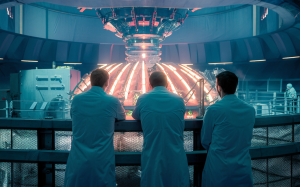MIT researchers achieve fusion energy breakthrough

In a breakthrough that paved the way for unlimited carbon-free energy, Massachusetts Institute of Technology (MIT) engineers successfully tested a novel high-temperature superconducting magnet capable of generating a world-record 20-tesla magnetic field strength, a crucial milestone for enabling practical fusion power plants.
Nearly three years after achieving this test, MIT researchers have now published a comprehensive analysis validating their record-smashing superconducting magnet technology, a key step toward commercial reactors that could provide unlimited clean power
“Overnight, it basically changed the cost per watt of a fusion reactor by a factor of almost 40 in one day,” said Dennis Whyte, former director of MIT’s Plasma Science and Fusion Center. “Now fusion has a chance of being economical.”
At the heart of the breakthrough is a magnet made from a superconducting material called REBCO that can operate at a higher temperature of 20 kelvins, eliminating the need for complex insulation between conductor windings. This “no-insulation” design, proved highly stable and simplified fabrication.
But the rigorous testing process didn’t stop there. Over several additional runs, researchers deliberately pushed the magnet beyond its limits to induce a “quench” – an intentional overheating that simulates worst-case operating conditions. Remarkably, the vast majority of the magnet survived this induced failure with minimal damage.
“That test actually told us exactly the physics that was going on, and it told us which models were useful going forward,” said Zach Hartwig, who headed the engineering group behind the magnet development.
The comprehensive data validated the team’s computer modeling and design approach, paving the way for scaling up the technology for SPARC, the compact fusion device being built by CFS.
Both MIT and CFS credit their close collaboration, combining academic and private sector strengths, as key to achieving this leap in a short timeframe. The decades of expertise at MIT’s fusion facilities also provided crucial knowledge and capabilities.
“This goes to the heart of the institutional capabilities of a place like this,” Hartwig said. “We had the capability, the infrastructure, and the people to do these things under one roof.”
What is Fusion Power?Fusion power aims to replicate the nuclear process that powers the sun – fusing light atomic nuclei to release tremendous amounts of energy. If harnessed on Earth, it could provide a virtually limitless, carbon-free energy source with low radioactive waste. But achieving the extreme temperatures and pressures for fusion has remained an elusive challenge despite decades of efforts. This latest magnet breakthrough brings that goal closer to reality.
Featured image: Ideogram
The post MIT researchers achieve fusion energy breakthrough appeared first on ReadWrite.
